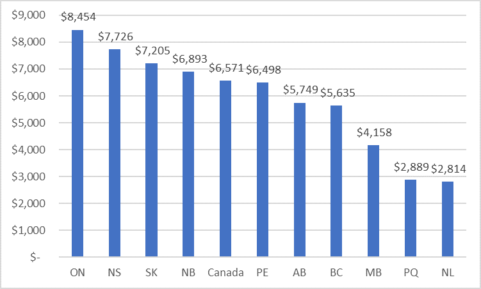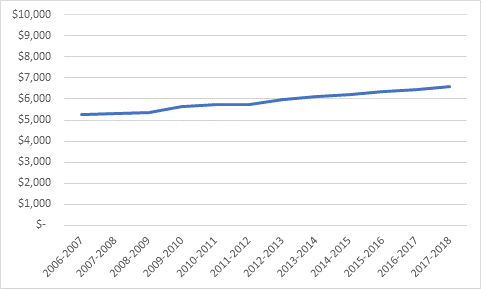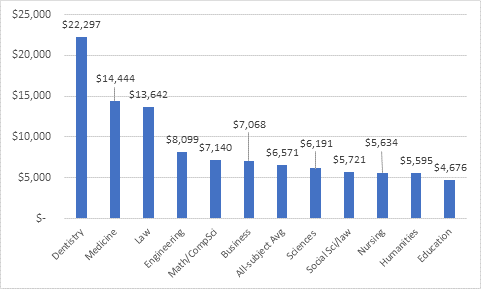So, yesterday was the annual tuition fee data dump from Statscan. Probably worth it to go over the data just a bit to see what the story is.
The data everyone likes to focus on is the “average undergraduate tuition fee by province”. This year, it looks like this (note that “fees” here do not include ancillary fees, only tuition proper):
Figure 1: Average Domestic Undergraduate Tuition Fees by Province, 2017-18
The other number that people always look out for is the one that shows increases over time. For reasons that defy easy comprehension, Statscan always publishes these in nominal rather than real dollars which always leads to inflated estimates of tuition increases. So I’ve put all the figures in 2017 real dollars in Figure 2:
Figure 2: Average Domestic Undergraduate Tuition Fees, Canada, 2006-07 to 2017-18
So, accounting for inflation, the increase in tuition fees is 25% over 11 years, or an average of 1.8% per annum.
Now keep in mind that what is being averaged here is tuition fees across all domestic undergraduate students, not fees across all undergraduate programs. So where a program has one set of fees for in-province students and another for out-of-province students (e.g. Quebec, Nova Scotia) the two get averaged. Also, even if there is no change in posted tuition, if more students enrol in more expensive programs (e.g. engineering) and fewer in cheaper ones (e.g. Arts) then that will still mean an increase in average tuition.
And tuition does vary a heck of a lot by field of study even at the undergraduate level. This is actually a nuance of Canadian tuition fee data which is not well understood outside the country, where variable tuition by field tends to be quite rare. Here’s the national average by field:
Figure 3: Undergraduate Average Tuition by Selected Field of Study, 2017-18
Note here that the presence of a few very expensive professional disciplines drags up the average substantially. In humanities and social sciences, average tuition fees are 12-15% lower than the national average, and in education it is 29% lower. This is one of those cases where the average price is somewhat higher than the median price – something to keep in mind when thinking about affordability.
There was some other interesting data in yesterday’s release with respect to domestic graduate student fees (up 1.8% in nominal terms, vs. 3.1% for undergraduate fees) and for international students fees (surprise surprise – up 6.1% in nominal dollars), but the above covers the main points of interest. Nothing terribly exciting, but worth re-capping and putting into context nonetheless.




 Tweet this post
Tweet this post
